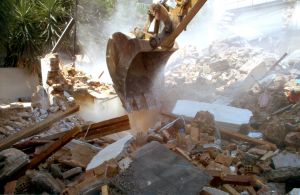The family of a former railroad worker from Illinois was awarded $1.4 million in an asbestos-related lawsuit brought on his behalf.
The man had reportedly worked in the rail yards for a company called GM&O Railroad (Gulf, Mobile & Ohio), whose primary routes extended from Mobile, Alabama and New Orleans, Louisiana to Kansas City, St. Louis and Chicago. This man’s work at the company extended from 1957 through 1972, where he worked in both Illinois and Kentucky.

Jurors determined that the railroad company had knowledge of the asbestos hazards putting workers at risk, yet they failed to warn employees. This worker died in 2009 of mesothelioma.
Our Boston mesothelioma attorneys know that former railroad workers are at high risk for developing mesothelioma today.
Asbestos was present in many of the train and locomotive components that were widely used between the 1930s and the 1970s. Even beyond that point, after the U.S. Occupational Safety & Health Administration ordered limitations on use of asbestos in construction materials, railroads continued to use it, in some instances quite extensively.
There is ample evidence in these cases that the railroad companies knew about the health risks to which it was exposing workers and did not bother to inform them or take steps to protect them from those risks. In fact, exposure to asbestos is still an ongoing concern for railroad workers whose companies are using parts that were made prior to the 1980s.
We tend to think of railroads as being somewhat antiquated. And its true that long-distance passenger travel has largely shifted to automobiles and airplanes. However, railroads still account for about a third of all U.S. exports and railroad firms continue to employ upwards of 1 million people across the country.
Here in Boston, we have the Massachusetts Bay Transportation Authority, the Massachusetts Bay Commuter Railroad Company, Amtrack and CSX.
Some of the most common railroad products known to sometimes contain asbestos are:
- Insulation. This was often used on steam and diesel locomotives to insulate materials such as boilers, the metal underbelly of the train, the outside of the engine, the caboose ceilings, the pipe coverings, inside the boxcars, the driving cabins and carriages and the electrical panels.
- Locomotive parts. These would primarily be brake linings, brake pads, clutches and the floor and ceiling tiles of passenger cars.
- Miscellaneous equipment. This would include things like plaster, wallboards, gaskets and sealing cement.
Because of the pervasiveness of asbestos on trains, even those rail industry workers who weren’t routinely involved in repairs have a good chance of having been exposed.
One study found that instances of mesothelioma and other kinds of lung cancer were three times more likely among railroad workers who were “operating,” such as brakemen, switchmen, conductors, engineers and roundhouse personnel, as opposed to non-operating workers.
Railroad workers may sue their current or former employers for injuries sustained on the job through the Federal Employers Liability Act, or FELA. In order to be successful in a FELA case, the worker has to show that the employer’s negligence contributed to the injury. Such a case may be brought in either federal or state court.
Continue reading
 Mesothelioma Lawyers Blog
Mesothelioma Lawyers Blog












